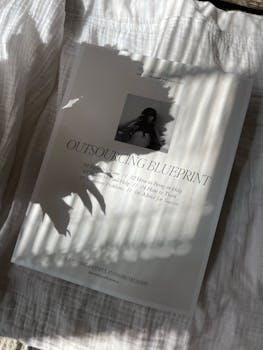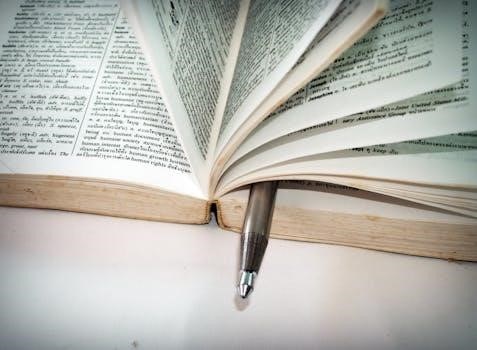Dr. Vodder’s Manual Lymph Drainage⁚ A Practical Guide
This comprehensive guide explores Dr. Emil Vodder’s renowned manual lymph drainage (MLD) technique. It provides a detailed, step-by-step approach to massaging lymph vessels, promoting smooth lymphatic flow. The guide emphasizes understanding the anatomy and physiology of the circulatory and lymphatic systems to effectively apply MLD.
Dr. Vodder’s Manual Lymph Drainage (MLD) is a specialized massage technique developed by Dr. Emil Vodder and his wife Estrid in the 1930s. It is a gentle, light-touch therapy that focuses on stimulating the lymphatic system to enhance the flow of lymph fluid throughout the body. Unlike traditional massage, MLD uses rhythmic, circular, and spiral-shaped movements to move the skin over the underlying tissues, promoting lymph drainage. This approach is designed to improve the body’s natural detoxification processes and reduce swelling. The Vodder method is considered an advanced technique, meticulously researched, and a cornerstone in lymphatic therapy. It aims to dilate lymph collectors, increasing the contraction of lymph vessels. The technique’s effectiveness has been further supported by Professor Mislin’s observations, who noted that the gentle circular motions and varied pressure application significantly enhance lymphatic vessel function. MLD’s key function is to encourage the movement of stagnant lymph fluid, thereby aiding in the reduction of edema and promoting overall health and wellbeing. The techniques are precise and require thorough training to ensure the desired therapeutic effect is achieved.
Basic Anatomy and Physiology of the Lymphatic System
Understanding the lymphatic system is crucial for grasping the principles of Dr. Vodder’s MLD. This intricate network of vessels, tissues, and organs plays a vital role in the body’s immune response and fluid balance. Lymphatic vessels, similar to blood vessels, transport lymph, a clear fluid containing white blood cells and waste products. The system starts with tiny capillaries that collect fluid from tissues, moving it through larger vessels towards lymph nodes. These nodes filter the lymph, removing harmful substances and activating immune cells. The lymphatic system also absorbs fats and fat-soluble vitamins from the digestive tract. Lymph flow relies on muscle contractions, breathing, and the subtle movements of tissues. When this system is compromised, fluid can accumulate, leading to conditions such as lymphedema. The lymphatic system’s main function is to return fluid to the circulatory system, prevent edema, and assist in immune function. The system’s smooth muscles and lymphangions also contribute to the flow. Understanding these components is essential for effective MLD.
The Four Basic Techniques of the Vodder Method
Dr. Vodder’s Manual Lymph Drainage (MLD) employs four fundamental techniques, each designed to stimulate lymphatic flow gently and effectively. The first, the Stationary Circle, involves a circular, stretching motion with the therapist’s hands, creating a subtle pumping action that encourages fluid movement. The second technique, the Rotary Technique, utilizes a spiral motion, moving the skin over the underlying tissues in a rotational fashion to promote lymph flow in a specific direction. The Pump Technique, the third basic move, employs a gentle, rhythmic pushing action, working along the path of lymphatic vessels. This technique aids in draining lymph from an area. Finally, the Scoop Technique, the fourth technique, involves a flat hand stroke, scooping the skin and underlying tissue to redirect lymph flow. These techniques are all performed with very light pressure, focusing on the skin and superficial tissues, never on the muscles. The correct application of these four techniques, in conjunction with an understanding of lymphatic anatomy, is the core of Dr. Vodder’s MLD method. Mastery of these techniques is essential for therapists.
Step-by-Step Massage Techniques
Manual Lymph Drainage (MLD), based on Dr. Vodder’s method, involves precise step-by-step techniques. Begin with a thorough understanding of the lymphatic pathways. The treatment starts proximally, at the neck, to clear the main lymphatic drainage areas. Next, work down the body, following the natural direction of lymph flow. Each technique is applied with gentle pressure, focusing on skin stretching rather than deep tissue manipulation. The Stationary Circles are used to create a pumping action, followed by the Rotary Technique, which promotes directional flow. The Pump Technique is applied along the lymphatic vessels to move fluid, and the Scoop Technique is used to redirect lymph towards the drainage areas. Proper hand positioning is crucial; the hand should mold to the skin, avoiding any friction. Each step involves a repetitive, rhythmic motion, moving the skin in a specified direction. The process is slow, allowing the lymphatic system to respond. Each area is treated with a specific sequence of techniques, always clearing the proximal areas first. Finally, the massage concludes with a final clearance of proximal drainage areas. These steps must be learned and followed carefully to ensure the efficacy of the treatment;
Indications for Manual Lymph Drainage
Manual Lymph Drainage (MLD), developed by Dr. Vodder, has a wide range of applications. It is primarily indicated for the treatment of lymphedema, which can result from surgery, radiation, or congenital conditions. MLD is also beneficial for post-surgical edema and swelling, accelerating the healing process by reducing inflammation and promoting fluid drainage. It’s used to manage venous insufficiency, alleviating swelling and discomfort associated with poor circulation. MLD is also a valuable tool in managing lipedema, a condition characterized by abnormal fat accumulation. Furthermore, MLD is used in the treatment of chronic conditions such as rheumatoid arthritis, reducing joint swelling and pain. It can aid in detoxification by promoting the removal of waste products and toxins from the body. Additionally, MLD can help with various inflammatory conditions, such as chronic sinusitis and skin conditions. The therapy can also alleviate fluid retention during pregnancy and improve overall immune function by stimulating lymphatic activity. It is also used for scar tissue reduction and pain management. MLD is also indicated for pre and post cosmetic surgery to reduce swelling and bruising. The overall goal is to reduce fluid accumulation and improve lymphatic circulation, enhancing the body’s natural healing capabilities and promoting overall wellbeing.

Contraindications for Manual Lymph Drainage
While Manual Lymph Drainage (MLD) is a gentle and effective therapy, there are specific contraindications that must be considered. Acute infections, such as cellulitis or erysipelas, are absolute contraindications, as MLD can exacerbate the spread of infection. Active deep vein thrombosis (DVT) or other thrombotic conditions are also contraindications due to the risk of dislodging clots, which can lead to serious complications. Untreated congestive heart failure is another major contraindication, as MLD can increase the fluid load on the heart. Malignant tumors, particularly those that are active or metastatic, are generally considered a contraindication unless specifically approved by an oncologist. In cases of acute kidney failure, MLD must be avoided to prevent additional strain on the kidneys. Individuals with unstable hypertension or hypotension should also avoid MLD. Additionally, severe acute asthma attacks, as well as acute bronchitis, are contraindications. MLD is typically not performed in cases of hyperthyroidism. Caution is advised in those with undiagnosed edema or swelling. Also, it is not recommended for individuals with severe pain. Patients with cardiac edema should also not receive MLD. Careful consideration and clearance from a physician are essential before performing MLD in these cases. MLD should also not be used on individuals with active tuberculosis. Always prioritize patient safety and consult with a healthcare professional when in doubt.
Treatment of Specific Body Parts

Dr. Vodder’s Manual Lymph Drainage (MLD) adapts its techniques to treat various body parts effectively. When addressing the face and neck, gentle, precise movements are employed to reduce swelling and promote sinus drainage. For the upper extremities, including the arms and hands, MLD focuses on clearing lymph nodes in the axillary region before working distally. The abdomen requires a specific approach, often beginning with deep abdominal breathing to activate the lymphatic system, followed by gentle strokes towards the inguinal lymph nodes. In the lower extremities, treatment targets the inguinal and popliteal lymph nodes, moving from the foot and ankle towards the groin. The back and chest benefit from strokes that encourage lymphatic flow towards the thoracic duct. Each area’s treatment is tailored to its unique anatomy and lymphatic pathways. MLD techniques vary in pressure, direction, and rhythm according to the specific area. Practitioners are trained to recognize anatomical variations and adapt their approach accordingly. Careful attention to the location of lymph nodes and vessels is crucial for effective treatment. The goal is always to stimulate lymphatic flow and reduce congestion in a safe and targeted manner. Therefore, a thorough understanding of the lymphatic system of each specific body part is imperative for successful MLD.
Special Techniques in MLD

Beyond the four basic techniques, Dr. Vodder’s Manual Lymph Drainage (MLD) incorporates several specialized approaches to address complex conditions. One such technique is the use of ‘draining’ strokes that encourage lymph flow towards specific lymphatic collectors, often employed in areas with significant edema. ‘Deep abdominal work’ is another advanced technique, focusing on gentle, rhythmic movements in the abdominal region to stimulate the thoracic duct and improve lymphatic drainage throughout the body. ‘Scar tissue treatment’ is crucial for addressing restricted lymphatic flow due to scarring, using specific strokes to soften and release the tissue. Another specialized technique focuses on the ‘lymphatic watersheds,’ areas where lymphatic drainage patterns converge. MLD practitioners use specific strokes to ensure proper flow across these watersheds. ‘Lymph node palpation’ is a critical technique, allowing therapists to assess the condition of lymph nodes and tailor treatment accordingly. Additionally, ‘combined decongestive therapy’ integrates MLD with other methods, such as compression bandaging, to achieve optimal results. These techniques require advanced training and a thorough understanding of the lymphatic system’s intricate workings. The application of these specialized techniques allows therapists to address complex lymphatic conditions more effectively, leading to improved patient outcomes and a more holistic approach to treatment.
Treatment Model for Secondary Lymphedema
Managing secondary lymphedema, often resulting from surgery or radiation therapy, requires a comprehensive treatment model utilizing Dr. Vodder’s Manual Lymph Drainage (MLD). The initial phase involves a thorough assessment, including edema measurement and identification of affected areas. MLD is then applied, aiming to reduce swelling by stimulating lymphatic flow. This is often combined with compression therapy, using bandages or garments to maintain the reduced limb volume and prevent fluid accumulation. Skincare is a crucial aspect, minimizing the risk of infection in the affected limb. Patient education is vital, empowering individuals to manage their condition effectively, including self-MLD and the proper application of compression. Exercise and movement also play a crucial role, promoting lymphatic circulation through muscle contractions. The treatment model is tailored to the specific needs of each patient, with close monitoring of progress and adjustments as necessary. The therapy often includes the treatment of scar tissue, which can hinder lymphatic flow, using specialized MLD techniques. Long-term management focuses on maintaining the reduced limb volume, preventing flare-ups, and improving the patient’s quality of life. This model integrates various therapeutic approaches, providing a holistic and effective strategy for managing secondary lymphedema. Regular follow-up is essential to ensure treatment effectiveness and prevent recurrence.

Complementary Treatments with MLD
Dr. Vodder’s Manual Lymph Drainage (MLD) is often enhanced when used in conjunction with other complementary therapies. Compression therapy, involving bandages or garments, is a vital adjunct, helping to maintain reduced limb volume after MLD sessions and prevent fluid re-accumulation. Therapeutic exercise, tailored to the patient’s condition, can further stimulate lymphatic flow through muscle contractions. Skincare is crucial in preventing infections, which are a common complication of lymphedema, and should be integrated into the treatment plan. Deep breathing exercises can also aid in lymphatic drainage, as the diaphragm’s movement influences the thoracic duct. Dietary modifications, focusing on anti-inflammatory foods and adequate hydration, can support the body’s natural detoxification processes; Some patients find benefit from acupuncture or acupressure, which may help to stimulate lymphatic flow and reduce pain. Low-level laser therapy has also been explored as a potential complement to MLD, aimed at reducing inflammation and promoting tissue healing. In addition, psychological support or stress management techniques may be beneficial, as chronic conditions can impact mental well-being. The integration of these complementary approaches alongside MLD provides a more holistic treatment strategy, leading to improved outcomes and an enhanced quality of life for patients dealing with lymphatic issues. Each therapy should be considered based on individual patient needs and preferences.
Diagnostic Examination and Edema Measurement
A thorough diagnostic examination is crucial before initiating Manual Lymph Drainage (MLD) therapy. This process begins with a comprehensive patient history, including details about the onset, duration, and progression of edema, any relevant medical conditions, and prior treatments. A physical examination follows, assessing the location, extent, and characteristics of the edema, such as pitting or non-pitting. Palpation helps identify tissue changes, like fibrosis or induration. Edema measurement is a key element, with circumference measurements at specific points on the affected limb, using a measuring tape. Volume displacement can be used for accurate limb volume calculation. Stemmer’s sign, which assesses the ability to pinch a skin fold on the dorsal aspect of the second toe or finger, can indicate lymphedema. Imaging techniques, such as lymphoscintigraphy, may be employed to visualize lymphatic function. Furthermore, ultrasound may help differentiate between various types of edema. Assessing pain levels and functional limitations is crucial for establishing treatment goals. The diagnostic process is critical for the creation of an individualized MLD treatment plan and monitoring of progress. Accurate and consistent measurements are vital for evaluating treatment effectiveness and making any necessary modifications.
The Effect of MLD on Smooth Muscles
Manual Lymph Drainage (MLD) exerts a notable influence on the smooth muscles within the lymphatic system. The gentle, rhythmic techniques of MLD stimulate the smooth muscle cells within the walls of lymph vessels, specifically the lymphangions. This stimulation promotes increased contractions of these vessels, enhancing the propulsion of lymph fluid along the lymphatic network. MLD’s effect on smooth muscles is not limited to lymphatic vessels; it also impacts smooth muscles in blood vessels. The technique encourages dilation of blood vessels, which can improve circulation and reduce peripheral resistance. This vasodilation effect, coupled with the increased lymphatic flow, helps to reduce swelling and congestion in the tissues. The gentle stretching of the skin during MLD is believed to initiate a reflex response in smooth muscles, contributing to their activation. This is particularly important in areas of lymphatic stagnation, where smooth muscle activity may be reduced. The overall effect of MLD on smooth muscle is to improve lymphatic transport and circulation, and contribute to the reduction of swelling, while promoting tissue health. This indirect yet profound impact underscores the therapeutic effectiveness of MLD.
Certification and Training in the Vodder Method
To become a certified practitioner of Dr. Vodder’s Manual Lymph Drainage (MLD), comprehensive training is essential, typically offered through specialized schools recognized by the Dr. Vodder Academy. These certification programs typically span several days, often five or more, involving intensive instruction and hands-on practice. The curriculum encompasses both theoretical and practical components, ensuring practitioners grasp the fundamental principles of MLD. The theoretical aspect delves into the anatomy and physiology of the lymphatic system, its connection to the circulatory system, and the specific effects of MLD on the body. The practical component focuses on mastering the four basic techniques of the Vodder method and applying them effectively to different body parts. Training includes oral, written, and practical exams to evaluate the participant’s competence in MLD. Successful completion of the course leads to certification, allowing the practitioner to offer Vodder MLD professionally. Continued professional development is encouraged through advanced courses and workshops. The thorough certification process underscores the importance of proper technique and ensures the highest standards of care are maintained within the practice of Dr. Vodder’s MLD.
